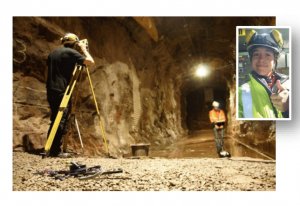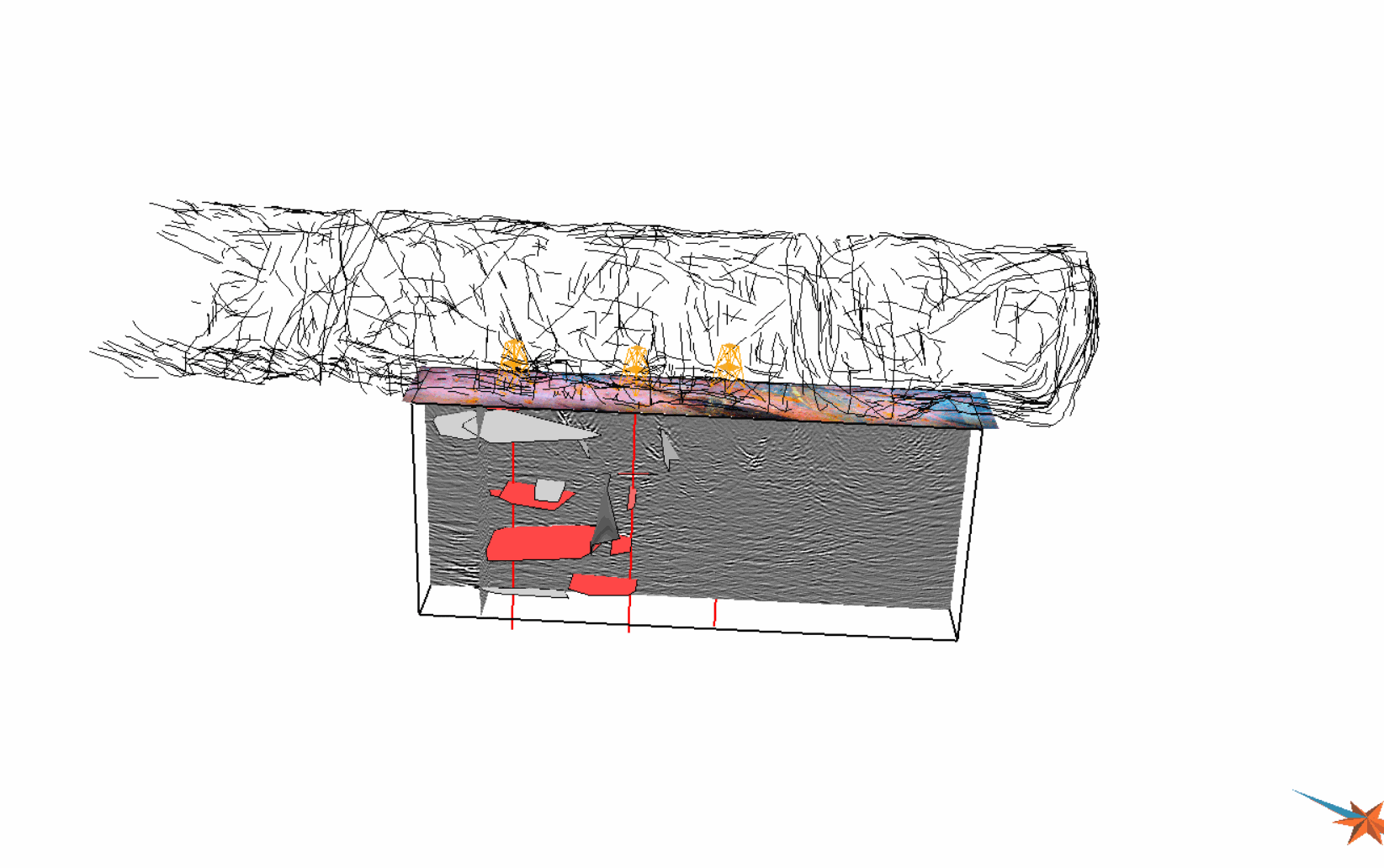Conditioning DFN models by GPR data
Reducing the uncertainty on Discrete Fracture Network (DFN) models by collecting geophysical data from site

Context
Predicting the flow and mechanical behavior of fractured rock masses is a major challenge for a large number of hydrological and geotechnical applications. This is mostly achieved by deriving DFN models from field (core and tunnel mapping)and pumping tests. The present research project is focused on the conditioning of DFN models to geophysical imaging data close to tunnel walls. The first part is to investigate the possibility to use the surface-based Ground Penetrating Radar(GPR) method to identify fractures close to tunnel walls at depth. Several data acquisition campaigns (GPR data acquisition + tracer tests) were conducted at the SKB Äspö tunnel Hard Rock Laboratory (HRL) in Sweden, at 410m deep.Secondly, the geophysical data shall be introduced in a broader DFN modelling framework which already involves fracture structural and hydrological data.All the data acquired during the project will be made available to the community to understand flow and transport patterns in fractured media. The methodology will offer a new approach for SKB to assess confinement properties of the bedrock barrier around canisters for nuclear waste disposal.

Project Results
The first experiment has the goal to investigate the subsurface with the surface based GPR method and quantify the proportion of fractures detected with this method. A total of 17 sub-horizontal fractures between 0.8 m and 5 m of length were identified (with an investigation depth until 10 m). Correlations with three boreholes (9-9.5 m deep) allowed to define the nature of the GPR reflections as open transmissive fractures dipping <35°. The fractures traces observed on tunnel walls allowed to deduce a 3D statistical fracture model. Comparing field data and the statistical model, we calculated the percentage of fractures (with surface area of 1-10 m²) detected by GPR in terms of sizes and orientations:
– 5.5 % of all the observed fractures regardless orientation or aperture (open and sealed)
– 42 % of fractures with dips <25°, regardless the aperture
– 80% of fractures with dips <25° and open aperture
Furthermore, this comparison indicates that the proportion of fractures ranging 1-10 m² detected by GPR is similar to the model, without any over- or under-estimation of the rate. These results enable us to conclude that GPR method can be very efficient to image open sub-horizontal fractures with sub-mm apertures in a very low permeable crystalline rock (granite in this case) (Molron et al, submitted).
The second experiment has the purpose to use time-lapse GPR during a tracer test experiment to hydraulically characterize the fracture media and identify the potential conduit for flows. The interpretation of the results is in progress.
Find out more
Molron, J., Linde, N., Davy, P., Baron, L., Darcel, C., Selroos, J. O., … & Doolaeghe, D. (2021). GPR-inferred fracture aperture widening in response to a high-pressure tracer injection test at the Äspö Hard Rock Laboratory, Sweden. Engineering Geology, 292, 106249.
Molron, J., Linde, N., Baron, L., Selroos, J. O., Darcel, C., & Davy, P. (2020). Which fractures are imaged with Ground Penetrating Radar? Results from an experiment in the Äspö Hardrock Laboratory, Sweden. Engineering Geology, 273, 105674.